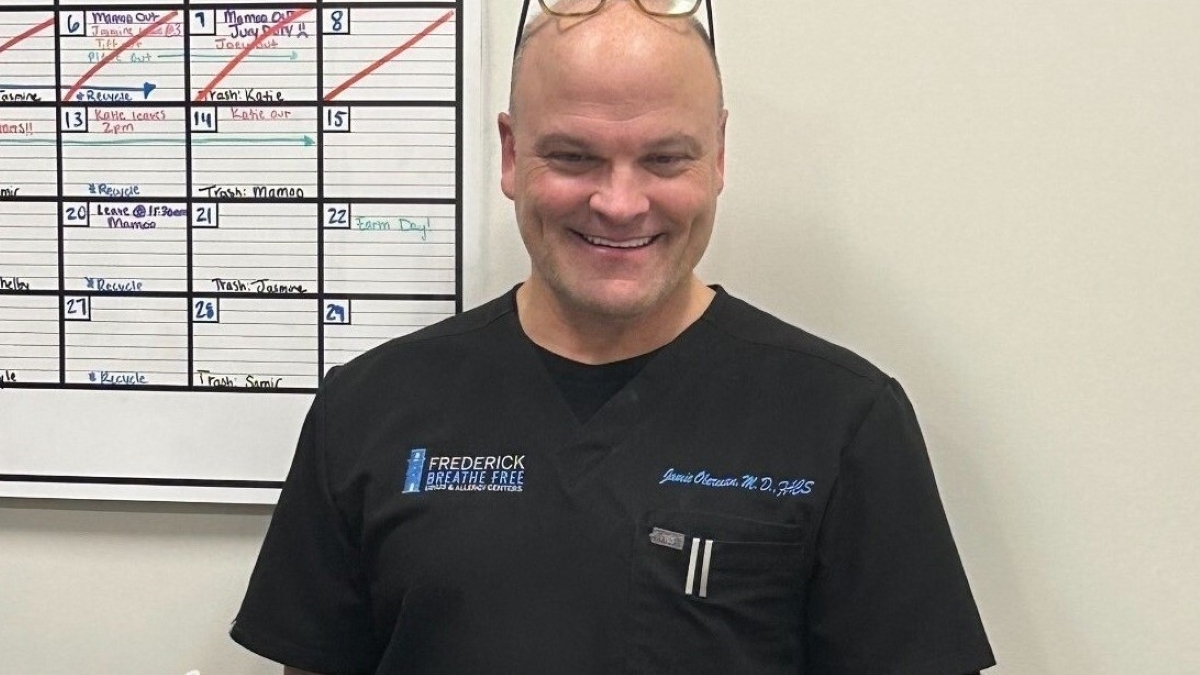Dr. Jamie Oberman, otolaryngologist | Facebook/Frederick Breathe Free
Dr. Jamie Oberman, otolaryngologist | Facebook/Frederick Breathe Free
• Eustachian tubes are responsible for regulating ear pressure and draining fluid from the middle ear.
• Eustachian tube dysfunction (ETD) occurs when the tubes are obstructed, resulting in pain, hearing problems and a feeling of fullness in the ears
• Severe cases of ETD require treatment from a medical professional.
ETD is one form of discomfort that results from sinusitis, according to Dr. Jamie Oberman of Frederick Breathe Free Sinus & Allergy Centers. The condition can be extremely uncomfortable for those who are struggling, as they have to deal with pressure buildup in their ears.
"I'm currently the only person performing (eustachian tube balloon dilation) in all of Frederick, Maryland," Oberman told Baltimore City Wire. "The eustachian tube is a part of our anatomy that goes from the back of the nose to the middle ear, so it has the same mucosal tissue lining as our paranasal sinuses. The swelling contributes to dysfunction of the eustachian tube, and the point of the eustachian tube is to allow you to breathe through your mouth. Some people, typically with eustachian tube dysfunction, either get recurrent infections or constantly feel like they're underwater and they can't hear or they have pressure in their ears. I have some patients who literally stopped traveling because they can't tolerate the barometric pressure changes."
According to Healthline, eustachian tubes are narrow passageways connecting the middle ears to the upper throat. Their primary role is to regulate ear pressure and facilitate the drainage of fluid from the middle ear, which is situated behind the eardrum. Typically, these tubes remain closed, except when you engage in actions like chewing, swallowing or yawning.
These passageways have a relatively small diameter and can become obstructed due to several factors. If the tubes become blocked, it can lead to hearing problems, ringing in the ears, balance issues, discomfort similar to an ear infection or a feeling of fullness in the ears, according to Cleveland Clinic. ETD can be caused by sinus issues like allergies, a common cold, the flu or chronic acid reflux. The symptoms could get worse with altitude changes, such as on an airplane or while scuba diving.
ETD is a condition that occurs quite frequently, according to Healthline. Depending on its underlying cause, it may resolve naturally or with straightforward self-care remedies at home. However, in more severe or recurrent instances, they recommend seeking medical attention from a doctor.
If at-home remedies or medications do not resolve ETD, a doctor might recommend another treatment. One option is eustachian tuboplasty, also known as eustachian tube balloon dilation. According to Cleveland Clinic, this procedure is relatively new. It involves a doctor inserting a small balloon through the nasal passage into the eustachian tube and then inflating the balloon. The balloon remains inflated for about two minutes before the doctor deflates and removes it. Patients typically recover from this surgery within a couple of days.
To see if you might be affected by ETD, take this Sinus Self-Assessment Quiz.


 Alerts Sign-up
Alerts Sign-up